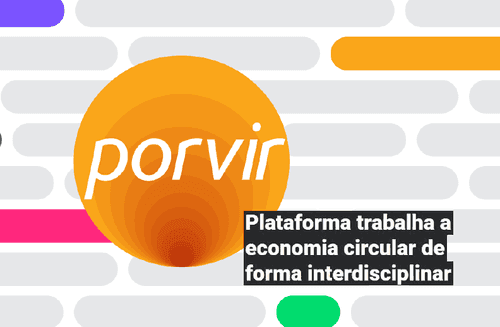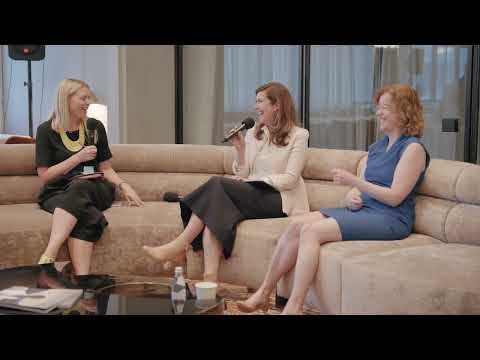
25/05/2021
Circular Movement in PorVir
Translated by Google Translate
*Look how nice it is! The Circular Movement was news on the Porvir portal, which embraced this cause and became a partner of the movement in March 2021. Together, let's think about a world that makes sense for everyone, from the construction of a circular economy that generates less impact and is more inclusive. See the full material and learn more about the Circular Movement: *
Platform works the circular economy in an interdisciplinary way
By Beatriz Cavallin, from Porvir
Which path does the garbage take until it reaches its final destination? What is your final destination? The questions may seem simple, but they are important and bring reflections on our relationship with topics such as sustainability. In 2019, planet Earth went through a historic moment when it reached the depletion of natural resources - such as water, mining, oil extraction, among others, which could be renewed without burden to the environment - scheduled for that year on July 29, three days earlier than in 2018, and earlier than in the entire historical series, measured since 1970. Although the scenario was completely reversed in 2020 - reaching the deadline only on August 22, this only serves as a message that it is possible to live using less renewable resources. But how do you start promoting this change?
Everything you need to know about circular economy
The Circular Movement platform, created by Atina Educação, arrives as a space to inform about the circular economy - a new way of thinking about garbage, in addition to bringing content that presents the circular economy in a simple, didactic and intuitive way. But, after all, how to define this concept and how does it impact education?
For Vinicius Saraceni, director of Atina, “the circular economy proposes a new way for the economy to work, in which nothing else is thought of as garbage, everything becomes a resource”. He advocates the broad participation of all actors in society so that this new model takes root. “Nothing more important than talking with young people, with teachers and with society in general so that they are agents of mobilization, so that they understand that their role in this chain and we can achieve more quality of life and well-being”, states.
Through areas such as transportation, food, industry, among others, the platform brings interactive content that explains what impact the economy can have on a given sector and what are the benefits of offering more sustainable alternatives for planet Earth - always accompanied by links and extra materials, for those who wish to go deeper into the subject.
The circular economy proposes a new way for the economy to work, in which nothing else is thought of as garbage, everything becomes a resource In addition to the interactive content, the platform also offers didactic sequences assembled by a pedagogical team to be used in corporations and classrooms, in various teaching stages.
Atila Iamarino invites: Circular Challenge (Circular Movement)
According to professor Dr. Edson Grandisoli, pedagogical director of the project, the idea of didactic sequences is to make educators work on the theme in a simpler, more structured way and obtaining good results. All of them bring, right at the beginning, information such as: which teaching stage she talks to, expected time, curricular components, necessary materials and which competencies of the BNCC (Common National Curricular Base) and Sustainable Development Goals are covered by the sequence. The contents are available both in PDF format and as a Google document, to facilitate editing. "The documents allow the teacher to make changes on top of this material, so that he can dialogue in the best possible way with the class", he says.
All activities include BNCC skills and are designed in a flexible way so that the teacher adapts to his daily life in the classroom. “The teacher can take the first class, as he can do the third, the fourth ... the ideal is that he goes through all the sequences to have a complete experience, but at the same time, there is the possibility of being more isolated classes ”, says Grandisoli. In addition to the theoretical content, all didactic sequences rely on active methodologies. They are organized based on the concepts of exploring, investigating, solving and sharing, causing the student to build knowledge that makes sense for their reality.
“With hands-on activities, it is possible to talk about important topics in practical ways and meet the BNCC, in addition to relating to the Sustainable Development Goals. It is not an extracurricular conversation, it is something that enters the curriculum ”, explains Vinicius, and points out that the idea of the platform is not to be an extra burden for the teacher, but rather to reinforce the idea that the circular economy is already present in our lives, and bringing the theme to the classroom is nothing more than a change in the perspective of themes already covered.
Instead of considering issues such as sustainability, waste, water and energy as central themes, the platform looks at these elements in an integrative way, to encourage further discussions. “I think that the circular economy dialogues well with this theme, it also works with the issue of sustainability, of waste, of the social issue, which are issues that have been worked on for a long time. But, when placed within the social framework, of a circular economy, they gain a new guise, a new work structure ”, reflects the professor, and continues. “When you work with a circular economy, you do not necessarily have recycling as the main point, but the need to create a new process, which involves all actors in society”, he reflects.
Thinking of engaging students, in 2020 the Movement launched the Circular Challenge. The pilot project was carried out with the ETECS (State Technical Schools) of the Paula Souza Center, in São Paulo. The initiative proposed to students the creation of projects within the concept of circular economy that would make sense to their community.
Biology teacher Carolina Estéfano, from ETEC in Rio Grande da Serra, in the ABC Paulista region, accepted the challenge, and alongside the chemistry teacher, designed an activity that involved practically the whole school. A total of 16 projects were designed and prototyped by high school students - including reusable pads, CD and potato fans, patchwork blankets, among others, the project that proposed the construction of dog houses from waste such as milk cartons and computers received an honorable mention (in the video you can see the presentation of the work).
To develop the new products, the students worked together to develop the ideas and develop the construction of prototypes. According to Carolina, the initial idea was to take these projects off the ground with practical activities, which has not yet been possible due to the restrictive measures resulting from the coronavirus. “With the challenge we were able to address several issues: we talked about social, environmental, economic issues, and we also addressed public policies”, says Carolina. As a result, students demonstrated greater engagement with the activity and ended up working much more than just concepts of biology and chemistry. “One of the concerns of the Paula Souza Center as a whole is to promote citizen education, which works with socio-emotional skills, so by forming remote teams, for example, we are able to talk about topics such as empathy and teamwork,” she says.
To bring the subject to the classroom, the teachers at the Paula Souza Center received training provided by the movement itself, a proposal that should be replicated soon. Despite this, Professor Grandisoli points out that currently educators can already implement these themes in the classroom only with the help of the didactic sequences available on the platform's website.
For the movement's pedagogical director, the effort of educators should be directed to discuss the theme in an interdisciplinary way. “Ideally, there should be a movement at the school so that teachers can work in an articulated, interdisciplinary and integrated way. The school still - and here I am speaking in an extremely generic way - works in a very isolated way ”, and continues:“ To develop complex and systemic themes, nothing better than working through the eyes of different disciplines. But we still need to walk a lot, both in public and private schools, to break disciplinary barriers and work in community ”.

